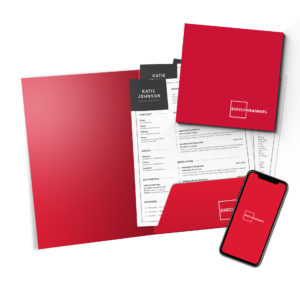The Ultimate Guide to Executive Resume Writing in Australia (2025 Edition)
By Nick Hurley, 29th August 2025

Contents
- The Ultimate Guide to Executive Resume Writing in Australia (2025 Edition)
- The Ultimate Guide to Executive Resume Writing in Australia (2025 Edition)
- Part 1: The Strategic Foundation: Understanding the 2025 Executive Landscape
- Part 2: Architecting Your Executive Resume: Structure and Content
- Part 3: Optimisation and Advanced Strategies
- Part 4: Final Polish and Professional Resources
- FREE CV SAMPLE
The Ultimate Guide to Executive Resume Writing in Australia (2025 Edition)
Part 1: The Strategic Foundation: Understanding the 2025 Executive Landscape
An executive resume is not a historical document; it is a forward-looking strategic proposal. It is a commercial argument for future value, articulated through the lens of past performance. To be effective in 2025, it must be crafted with a deep understanding of the prevailing economic climate, the specific competencies in demand, and the unique cultural and formatting conventions of the Australian market. An executive who submits a resume written for the market of five years ago is signalling an inability to adapt to the present—a fatal flaw at the leadership level. This guide provides the strategic intelligence and tactical frameworks necessary to build a resume that secures interviews for Australia’s most competitive senior roles in 2025.
1.1 The Australian Executive Job Market in 2025: A Climate of Cautious Optimism and Intense Competition
The Australian executive job market in 2025 presents a complex and nuanced picture, defined by a post-pandemic recalibration. While there are clear signals of economic recovery and renewed business confidence, these are tempered by a significant strategic pivot towards internal talent retention, creating a highly competitive landscape for external candidates.1
An unexpected surge in executive recruitment in the latter half of 2024 has fuelled a sense of cautious optimism, suggesting a potential broader economic recovery and increased market confidence moving into 2025.1 This has created new opportunities for senior leaders, particularly in high-growth sectors. Key industries driving this demand include Technology, Finance (with a strong focus on Risk and Compliance), Renewable Energy, Digital Health, Data Analytics, and Cybersecurity.3 The public sector has also undergone a period of staggering expansion, adding 316,000 jobs in the preceding year, creating significant demand for experienced managers and executives.4
However, this optimism is balanced by a market that has fundamentally shifted away from the “great resignation” era. Employee turnover has returned to pre-pandemic levels, with a remarkable 87% of Australian employers expressing confidence in their ability to manage staff attrition.2 Salary increase budgets have stabilised at approximately 4%, indicating a less frenetic hiring environment.2 This stability has precipitated a major strategic realignment: employers are now channelling their budgets and efforts into
retaining, motivating, and upskilling their existing workforce rather than pursuing aggressive external hiring campaigns.2 This is further reflected in job mobility statistics, which have returned to pre-pandemic norms of around 8%, suggesting executives themselves are adopting a more cautious approach to changing roles.1
This market dynamic fundamentally alters the purpose and utility of an executive resume. In an environment where internal progression is prioritised, the resume is no longer merely a tool for external job applications. It becomes a critical, living document for internal career management. It serves as the business case for internal promotions, for securing leadership of new strategic projects, and for justifying one’s ongoing value during periods of organisational restructuring. Therefore, the 2025 executive resume must be crafted not just as a reactive tool for a job search, but as a proactive instrument for demonstrating continuous return on investment (ROI) to both prospective and current employers.
1.2 The New Executive Skillset: Blending Human-Centric Leadership with Technological Acumen
The archetypal executive for 2025 is a hybrid leader, possessing a sophisticated blend of uniquely human skills and high-demand technical competencies. The pervasive integration of Artificial Intelligence (AI) and automation into the business world has, paradoxically, elevated the strategic importance of skills that machines cannot replicate. Consequently, Australian recruiters are prioritising candidates who demonstrate mastery in both spheres.7
The market has decisively moved towards skills-based hiring, with 72% of Australian employers now prioritising skills assessments over traditional formal qualifications.7 This shift means an executive’s value is no longer defined solely by their job title or the prestige of their previous employer, but by their portfolio of transferable, high-impact competencies. The resume must be architected to reflect this reality, functioning less as a historical record and more as a persuasive portfolio of evidence.
Human-Centric Leadership Competencies:
These are the skills that drive culture, innovation, and resilience. Analysis of the current market shows the most sought-after core skills are analytical thinking; resilience, flexibility, and agility; and leadership and social influence.9 Emotional intelligence (EQ) is consistently ranked as the number one soft skill for 2025, recognised as essential for motivating teams, managing complex change, and fostering productive environments.8 Other critical leadership skills in high demand include:
- Communication and Collaboration 8
- Change Management 8
- Critical Thinking and Problem-Solving 8
- Cultural Awareness 8
High-Demand Technical & Strategic Competencies:
These are the hard skills that enable executives to navigate the modern commercial and technological landscape.
- AI and Digital Literacy: AI is no longer an experimental tool; it is the default. An estimated 97% of HR teams now use AI in their recruitment processes.11 Sectors with high exposure to AI are experiencing up to five times the growth in labour productivity, and executives with demonstrable AI skills can command wage premiums of up to 25%.1 The ability to strategically leverage AI for business growth is now a baseline expectation for senior leadership.1
- ESG and Sustainability: Demand for “green skills”—such as carbon accounting, sustainable procurement, and ESG strategy—is significantly outpacing supply.11 This has moved from a niche concern to a core competency for modern executive leadership, reflecting investor and consumer priorities.13
- Cybersecurity and Data Analytics: These fields continue to experience high growth and significant skills shortages. Executives with expertise in these domains are highly sought after and command premium compensation packages.3
- Project and Change Management: The ability to lead complex, cross-functional projects and guide organisations through significant transitions remains a fundamental and highly valued executive function.8
1.3 Decoding the Australian Difference: Formatting, Length, and Local Etiquette
An executive resume that fails to adhere to local conventions is often discarded before its content is ever evaluated. The Australian market has specific expectations regarding length, format, and tone that differ significantly from US and other international standards. Submitting a resume that ignores these norms can signal a lack of diligence or cultural unfamiliarity—both red flags for a senior leadership role.16
- Length: The standard for an Australian executive resume is 3 to 5 pages.16 A one-page document, often considered best practice in the United States, is viewed as insufficient in Australia, lacking the necessary detail and depth to substantiate a senior-level career.16 For a seasoned professional, 2 pages may be acceptable, but 3 to 4 is the expectation.18
- Format: The reverse-chronological format is the undisputed gold standard, preferred by 99% of Australian recruiters.16 This format places the most recent and relevant experience at the forefront, allowing for a clear demonstration of career progression.22
- Personal Details: Australian anti-discrimination laws and recruitment best practices dictate that resumes must not include a photograph, date of birth, marital status, religion, or nationality.17 The contact section should be limited to your full name, mobile number, a professional email address, your general location (e.g., Sydney, NSW), and a customised LinkedIn profile URL.16
- Language and Tone: The document must be written in Australian English, with attention to local spelling and grammar (e.g., ‘organise’ not ‘organize’, ‘licence’ not ‘license’).17 The tone should be authoritative and commercially focused, but it is crucial to avoid self-inflating adjectives like “exceptional” or “outstanding.” In the Australian business culture, it is more effective to let quantified achievements and tangible results speak for themselves.22
- References: The standard practice is to include a single line at the end of the resume: “Professional references are available upon request.” Do not list referee names or contact details on the document itself. This is a matter of professional courtesy to protect their privacy.16
To provide absolute clarity, the following table contrasts the key features of an Australian executive resume with common international standards.
| Feature | Standard US/International Resume | Australian Executive Resume (2025) |
| Length | 1-2 pages maximum | 3-5 pages expected 16 |
| Focus | Responsibilities & Skills | Strategic Impact & Quantified Achievements23 |
| Summary | Career Objective or brief summary | Executive Profile: A strategic brand narrative (USP) 24 |
| Tone | Often uses strong, self-promotional adjectives | Authoritative but evidence-based; avoids hyperbole 17 |
| Photo | Common in some European countries | Strictly excluded 18 |
| Personal Data | Varies; may include age/nationality | Excluded (Name, Contact, LinkedIn URL only) 17 |
| References | Sometimes listed | “Available upon request” only 16 |
Part 2: Architecting Your Executive Resume: Structure and Content
With a clear understanding of the strategic context, the next step is the practical construction of the document. A winning executive resume follows a specific architecture designed for maximum impact and readability, guiding the recruiter’s attention through a compelling narrative of leadership and value creation.
2.1 The Anatomy of a Winning Australian Executive Resume
The ideal structure for an Australian executive resume is logical, hierarchical, and optimised for both human recruiters and Applicant Tracking Systems (ATS). Each section serves a distinct purpose in building the overall business case.
- Contact Details & Professional Headline: The document should begin with a clean header containing your name, mobile number, professional email address, and a customised LinkedIn URL.23 Immediately below your name, a professional headline acts as a powerful title, instantly positioning you. For example: “Chief Financial Officer | Digital Transformation | M&A Integration”.20
- Executive Profile (or Summary): This is a 4-6 line narrative paragraph that serves as your strategic pitch.24 It summarises your core value proposition and replaces the outdated “Career Objective”.17
- Core Competencies (or Key Skills): A bulleted list or three-column table showcasing 9 to 12 of your most relevant hard and soft skills.16 This section is crucial for both quick human scanning and ATS keyword optimisation.16
- Professional Experience: This is the core of the resume, presented in reverse-chronological order.16Each entry should include:
- Company Name: Followed by a brief, one-to-two-line description of the company (e.g., industry, turnover, staff size) if it is not a widely recognised brand.23
- Your Title: Clearly stated.
- Dates of Employment: Using both month and year (e.g., Mar 2019 – Oct 2024) is critical for clarity and transparency.23
- Achievements: A series of 3-6 bullet points detailing your key, quantified achievements in the role.27
- Education & Professional Development: List your tertiary degrees, major certifications (e.g., Graduate of the Australian Institute of Company Directors – GAICD), and significant professional development courses in reverse-chronological order.13
- Board Appointments & Governance Experience: A dedicated section is essential for executives with board roles, advisory board positions, or significant board committee experience. This clearly separates governance from operational responsibilities.32
- Additional Information (Optional): A final section can be used to list relevant publications, speaking engagements, professional affiliations, and major awards that were not tied to a specific role.31
- References: Conclude with the single, standard line: “Professional references are available upon request”.16
2.2 The Executive Profile: Your First 30 Seconds to Make an Impact
The Executive Profile is the most valuable real estate on your resume. It is the first section a recruiter reads and often determines whether they continue. It must function as a powerful, distilled pitch that defines your personal brand and unique value proposition (USP).17 This is not a list of skills; it is a strategic narrative that answers the fundamental question: “What commercial problems do you solve?”.17
A compelling Executive Profile is typically 2-4 sentences long and synthesises your career into a potent statement.24 A proven formula for constructing this profile is: ** with in [Key Area of Expertise/Industry], known for delivering [2-3 Major Quantified Achievements]. A leader who excels at [Key Competency].**
Crucially, this section must avoid common pitfalls that undermine executive credibility:
- Outdated Objective Statements: Statements like “Seeking a challenging senior role…” are obsolete. They focus on what you want, whereas the profile must focus on the value you offer.17
- Meaningless Buzzwords: Avoid unsubstantiated clichés like “results-driven,” “strategic thinker,” or “proactive”.17 The achievements in your resume shouldprove you are strategic; the profile does not need to simply state it.
- Third-Person Language: Writing in the third person (e.g., “A highly skilled leader who…”) can sound pompous and dated. While the first-person pronoun “I” is omitted, the narrative should be written from a first-person perspective.23
Consider the following transformation:
- Before (Generic and Ineffective): “Highly skilled, multifaceted leader, responsible for directing organisational change programs, implementing new business process improvements, systems and people and encouraging improved efficiencies, effectiveness and reduced costs”.17
- After (Specific, Branded, and Impactful): “Commercially-focused Chief Operating Officer with 15+ years’ experience transforming manufacturing supply chains for ASX 100 companies. Championed a digital transformation initiative that increased production efficiency by 25% and pioneered lean manufacturing principles that cut operational costs by $2M annually. A leader known for fostering a culture of continuous improvement across teams of 200+”.13
The second example is superior because it is specific, quantified, and establishes a clear brand identity—a leader who delivers efficiency and cost savings in the manufacturing sector.
2.3 Show, Don’t Tell: Quantifying Your Achievements with the Impact Formula
A fundamental error in resume writing is confusing responsibilities with achievements. Responsibilities describe the scope of a role (what you were supposed to do), whereas achievements prove you performed that role with excellence and delivered a tangible return on investment.20 Every bullet point under your professional experience should be an achievement, not a task.
The key to crafting powerful achievement statements is quantification. Measurable results are exponentially more effective than vague claims. The statement “Increased sales” is forgettable; “Increased sales by 20% in six months” is a compelling data point that demonstrates impact.39
To systematically convert duties into achievements, one can adapt the logic of the STAR method (Situation, Task, Action, Result), which is commonly used for behavioural interviews.41 For the concise format of a resume bullet point, this can be distilled into a direct
Executive Impact Formula:
[Powerful Action Verb] + +
- Powerful Action Verbs: Start every bullet point with a dynamic verb that conveys leadership and initiative. Use executive-level verbs like steered, championed, spearheaded, transformed, pioneered, established, and shaped.17
- The Project/Initiative: Briefly describe the specific project, strategy, or action you took.
- The Measurable Result: This is the most critical component. It answers the “so what?” question by providing a concrete, quantifiable outcome.
Example Application of the Formula:
- Verb: Spearheaded
- Project: a company-wide digital transformation.
- Result: resulting in a 25% increase in production efficiency and a $2M annual reduction in operational costs.13
Executives should focus on metrics that directly relate to commercial value, such as:
- Revenue growth ($ or %)
- Cost savings and budget management ($ or %)
- Market share increase (%)
- Efficiency, productivity, or process improvements (%)
- Team size managed and engagement score improvements
- Successful project completions (on time, under budget)
- Customer satisfaction/retention scores (%)
- Risk reduction (%).40
The ability to consistently quantify achievements does more than just list successes; it serves as a proxy for commercial acumen. An executive who provides hard numbers demonstrates a deep understanding of business drivers like P&L, ROI, and efficiency. It shows they think and operate like a business leader focused on delivering tangible value, not just a functional manager completing tasks. This act of quantification is, in itself, a demonstration of a core executive competency.
2.4 Selecting and Framing Core Competencies for a Dual Audience
The “Core Competencies” or “Key Skills” section is a strategic tool that must be carefully engineered to serve two distinct audiences simultaneously: the automated Applicant Tracking System (ATS) and the time-poor human reader.16
For the ATS, this section acts as a concentrated repository of keywords. For the human recruiter, it provides a quick, scannable snapshot of your primary capabilities, setting the context for the detailed achievements that follow.16 The optimal format is a clean three-column table or a simple bulleted list containing 9 to 12 of your most potent competencies.16
The selection of which competencies to include should be a deliberate, strategic process:
- Analyse Target Roles: Meticulously review job descriptions for the roles you are targeting. Identify the required skills and competencies and mirror the exact language and terminology used.28
- Blend Hard and Soft Skills: A credible executive profile requires a balance of technical or functional expertise (e.g., ‘Financial Modelling’, ‘Cloud Architecture’, ‘Mergers & Acquisitions’) and high-level leadership competencies (e.g., ‘Change Management’, ‘Stakeholder Engagement’, ‘Corporate Governance’).16
- Focus on Executive-Level Themes: The language should reflect seniority. Use high-impact competency keywords that are relevant at the C-suite and board level, such as:
- Strategic Planning & Execution
- P&L Management
- Corporate Governance
- Digital Transformation
- Commercial Acumen
- Risk Management
- Stakeholder Engagement
- ESG & Sustainability Strategy.13
It is critical to maintain credibility. Do not list generic, unprovable skills like “Hard worker” or “Excellent problem-solver”.37 Every competency listed in this section must be implicitly substantiated by the quantified achievements detailed in your Professional Experience section. Furthermore, avoid listing obsolete skills or software. At the executive level, proficiency in standard tools like Microsoft Office is assumed and including it wastes valuable space.37
Part 3: Optimisation and Advanced Strategies
Beyond the foundational structure, a truly superior executive resume employs advanced strategies for optimisation and is tailored for specific high-stakes scenarios. This involves a technical understanding of recruitment technologies and a nuanced approach to complex career situations.
3.1 Beating the Bots: Mastering the Applicant Tracking System (ATS)
A significant percentage of online applications are first processed by an Applicant Tracking System (ATS) before ever being seen by a human.46 It is crucial to view the ATS not as an adversary to be “tricked,” but as a search engine to be optimised for. Misunderstanding its function can lead to a perfectly good resume being filtered out for purely technical reasons.47
A clear understanding of ATS realities versus myths is the first step:
- Myth: ATS automatically rejects resumes.
- Reality: An ATS does not “reject” candidates. It parses, stores, and ranks resumes based on keyword relevance, allowing recruiters to search the database. A poorly optimised resume may simply never appear in a recruiter’s search results, but the system itself does not make a hiring decision.38
- Myth: An ATS-friendly resume must be plain text and visually unappealing.
- Reality: While overly complex designs with tables, columns, and graphics can confuse parsers, modern ATS can handle clean, professional formatting. A well-structured document with standard fonts and clear headings is perfectly acceptable and preferred by the human reader who ultimately reviews it.48
- Myth: You should always submit your resume as a PDF to preserve formatting.
- Reality: While many modern systems handle PDFs well, a.docx file is often the safest choice, as some older or less sophisticated ATS parsers can struggle to read text from image-based PDFs.19The best practice is to always follow the specific instructions in the job application portal.
To ensure your resume is machine-readable and ranks highly in recruiter searches, adhere to these fundamental optimisation rules:
- Strategic Keyword Integration: The most important factor is keyword relevance. Integrate keywords and phrases from the job description naturally throughout your resume—in the Executive Profile, the Core Competencies section, and within the descriptions of your achievements.50
- Standard Section Headings: Use conventional, unambiguous titles for each section. Opt for “Professional Experience,” “Education,” and “Key Skills” over creative alternatives like “My Career Journey” or “What I Bring to the Table”.47
- Simple, Clean Formatting: Avoid using tables, columns, text boxes, images, logos, or unusual graphics. Use standard, universally available fonts like Calibri, Arial, or Times New Roman in a readable size (10-12pt).49 Do not place important information like contact details in the header or footer, as some systems may not parse these areas.48
- Acronyms and Jargon: The first time you use a specific term or acronym, spell it out completely, followed by the abbreviation in parentheses. For example, “Environmental, Social, and Governance (ESG)”.47 This ensures the system will match the keyword regardless of which version the recruiter searches for.
The most effective approach is to recognise the sequential nature of the review process. The resume must first be machine-readable for the ATS, and then it must be human-persuasive for the recruiter. These are not conflicting goals. The optimal strategy is to write the resume for the human reader first, creating a compelling, achievement-driven narrative. Then, as a final step, conduct an “ATS audit” to ensure formatting is clean, headings are standard, and relevant keywords are naturally integrated. A resume that is overstuffed with keywords to the point of being unreadable will fail the human test, even if it passes the bot.
3.2 Tailoring for Specific Executive Contexts
A generic, one-size-fits-all resume is inadequate for the nuanced requirements of specialised, high-stakes executive roles. The core document must be strategically adapted for different contexts, such as applications for board positions, significant career changes, or explaining periods of unemployment.
3.2.1 The Board Resume: From Operations to Governance
Crafting a resume for a board director position requires a fundamental strategic shift in perspective and content. A board resume is not an executive resume. Its focus must pivot from the day-to-day doing of operational management to the high-level guiding of governance, strategy, and oversight.32
- Strategic Focus: The content must emphasise your breadth of experience and specific governance skills. Instead of detailing P&L management, focus on your ability to interpret financial reports and oversee budgets. Rather than listing project management achievements, highlight your contributions to long-term corporate strategy and risk management frameworks.33
- Content and Structure:
- Create a dedicated “Board & Governance Experience” section and place it prominently at the top of the resume, immediately following the Executive Summary.32
- List all board appointments (corporate, not-for-profit, advisory) in reverse-chronological order. For each, specify the organisation’s size and type, your exact role (e.g., Chair, Audit & Risk Committee Member), and 2-3 key contributions related to governance, strategy, or major initiatives.32
- If you lack formal board experience, reframe your executive roles to highlight “board-related experience,” such as directly reporting to a board, serving on a board committee, or presenting strategic initiatives to the board.32
- Key Competencies: The skills section should be tailored to reflect board-ready competencies such as Corporate Governance, Financial Acumen, Risk Oversight, Strategic Leadership, and deep Industry Knowledge.33
- Length: In Australia, a board resume is typically 3 to 4 pages long. This expanded length is acceptable and often preferred, as it allows for the necessary depth and context to detail complex governance achievements and contributions.33
3.2.2 The Career Change Resume: Building a Bridge with Transferable Skills
For an executive transitioning to a new industry, the resume’s primary challenge is to convince a recruiter that experience in Industry A is directly relevant and valuable for a role in Industry B. The document must act as a bridge, explicitly connecting past accomplishments to future potential.55
- Format: A combination or functional-chronological hybrid format is most effective. This structure places greater emphasis on skills over a purely linear work history.55
- Lead with a Clear Objective: The Executive Profile must immediately address the career change. It should clearly state your intention to transition and frame your past experience in the context of the new field, highlighting your motivations and transferable value.56
- Prioritise a “Transferable Skills” Section: This section should appear prominently, immediately after the profile. Group your skills under headings that are relevant to the new industry (e.g., “Commercial Strategy,” “Leadership & Team Development,” “Data-Driven Decision Making”) to show direct alignment.55
- Reframe Achievements: This is the most critical step. Review your entire work history and rewrite your achievement bullet points using the language and priorities of the target industry. Focus on universally valuable outcomes such as leading teams, managing large budgets, driving revenue growth, improving efficiency, or managing complex stakeholders. For example, a retail manager’s achievement in “improving customer satisfaction” can be reframed as “enhancing customer relationship management,” a key skill in the tech sector.55
3.2.3 Addressing Employment Gaps: Turning Pauses into Positives
Employment gaps are increasingly common and are not necessarily a negative factor, provided they are addressed strategically and honestly.58 The goal is to frame any career break as a deliberate and productive period, reassuring the employer that your skills remain sharp and you are motivated to return to the workforce.59Lying or altering employment dates is a critical error that will likely be discovered during reference checks and will destroy your credibility.59
- How to Present Gaps on the Resume:
- For significant gaps, it is best to address them directly and concisely within the chronological flow of your work experience. A single, professional line is sufficient.
- Parental Leave: “2023–2024: Planned career break for parental leave. Re-entering the workforce with renewed focus and commitment.”.61
- Professional Development: “2023–2024: Professional Development & Upskilling. Completed Master of Business Administration (MBA) at Melbourne Business School.” This turns a gap into a proactive investment in your skills.61
- Redundancy: This is best explained in a cover letter or interview. On the resume, focus on any productive activities undertaken during the gap, such as short-term consulting, freelance projects, or volunteer work that kept your skills current.58
- Travel or Personal Break: “2023–2024: Career break for international travel and personal growth, developing cross-cultural awareness and resilience.”.58
- Caring for Family / Illness: “2023–2024: Career break to attend to a personal family matter, which is now resolved.” This provides context without oversharing sensitive details. Emphasise that you are now fully ready to return to work.60
- Demonstrate Continued Engagement: The most effective way to mitigate the negative perception of a gap is to demonstrate that you remained professionally or personally productive. Highlight any relevant activities undertaken during this time, such as:
- Degrees, certifications, or short courses 59
- Consulting, freelance, or volunteer work 59
- Industry-related publications or speaking engagements 59
Part 4: Final Polish and Professional Resources
The final stage of creating a job-winning executive resume involves a meticulous review process to ensure perfection in every detail, followed by a strategic consideration of when to engage professional expertise. For a high-stakes executive career move, this final polish can be the deciding factor.
4.1 The Executive Resume Final Review Checklist
Before submitting your resume for any role, conduct a rigorous final review using the following checklist. An error or oversight at this stage can undermine all the strategic work invested in its creation.
Strategic Alignment
- [ ] Does the Executive Profile clearly and concisely articulate a unique value proposition (USP)?
- [ ] Is every achievement under the Professional Experience section quantified with a metric ($ or %)?
- [ ] Does the entire document tell a consistent story that is directly aligned with the challenges and requirements of the target role?
Australian Conventions
- [ ] Is the resume between 3 and 5 pages in length?
- [ ] Is the format strictly reverse-chronological?
- [ ] Have the photograph and all personal data (age, marital status, etc.) been removed?
- [ ] Is all spelling and grammar consistent with Australian English?
ATS Optimisation
- [ ] Are all section headings standard and unambiguous (e.g., “Professional Experience”)?
- [ ] Is the formatting simple, with no tables, columns, text boxes, or images?
- [ ] Have keywords from the job description been integrated naturally throughout the document?
- [ ] Is the file saved in the correct format (.docx is often safest, unless a PDF is specifically requested)?
Language and Tone
- [ ] Does every achievement bullet point begin with a powerful, executive-level action verb?
- [ ] Have all clichés, buzzwords, and unsubstantiated claims (e.g., “strategic thinker”) been eliminated in favour of evidence-based statements?
- [ ] Is the overall tone authoritative, professional, and commercially focused?
Proofreading
- [ ] Has the document been proofread at least twice for spelling and grammatical errors?
- [ ] Has a trusted colleague or mentor reviewed it for clarity, impact, and potential typos?
4.2 Partnering with a Professional: When and How to Hire an Executive Resume Writer
While this guide provides the comprehensive tools for a world-class DIY approach, senior executives must strategically evaluate the ROI of their own time and expertise. For a critical career transition, a board appointment, or a C-suite application, partnering with a specialist executive resume writer is often a high-return investment. However, the market is varied, and selecting the right partner is crucial.
What to Look for in a Premier Executive Resume Writing Service:
A true strategic partner offers far more than a simple rewrite. They act as a personal branding consultant, career strategist, and market intelligence expert.
- Executive Specialisation: The service should focus exclusively on senior leaders, not offer a generic service for all career levels. Their process must involve a deep, consultative discovery phase—typically a 60-90 minute interview or strategy session—not just a questionnaire. This is essential to uncover your unique value and career narrative.63
- Demonstrable Market Knowledge: The writer or firm must possess deep, current knowledge of the Australian executive market, including the specific nuances of key hubs like Sydney, Melbourne, and Brisbane.65 They should understand what local recruiters and boards are looking for.68
- A Focus on Personal Branding: The best services do not just format your history; they build your personal brand. They work with you to define your USP and craft a compelling narrative that positions you as the solution to specific commercial challenges.63
- Verifiable Reviews and Credentials: Look for a long track record of positive, detailed reviews from senior leaders that you can cross-reference on LinkedIn.64 While many credentials exist, membership in professional bodies like the Career Development Association of Australia (CDAA) can be an indicator of commitment to professional standards.71
Pricing as an Indicator of Quality:
In the executive resume writing industry, price is often a reliable indicator of the depth and strategic nature of the service.
- Be highly skeptical of services offering to write an executive resume for a few hundred dollars. This price point typically reflects a template-based, high-volume model that is inadequate for senior roles.64
- Premium, genuinely consultative services for executives in Australia typically range from approximately $600 to over $2,500.73 This significant investment reflects a comprehensive process involving in-depth consultation, market research, personal brand strategy, and expert copywriting—not just document formatting.
The value proposition of a top-tier service is clear. Clients of premier firms report tangible results, including securing interviews multiple times faster and achieving average salary increases of over $40,000.46 Ultimately, the decision to engage a professional writer should be viewed as a strategic investment in one’s career, designed to accelerate progress and maximise earning potential in a competitive and rapidly evolving executive landscape.
Works cited
- The 5 Key Trends Shaping Executive Employment in 2025, accessed on August 28, 2025, https://www.ampersand.com.au/5-key-trends-shaping-executive-employment-in-2025/
- HR Trends 2025 – Embracing AI, flexibility and a skills-powered future, accessed on August 28, 2025, https://www.mercer.com/en-au/insights/talent-and-transformation/attracting-and-retaining-talent/hr-trends-2025-embracing-ai-flexibility-and-a-skills-powered-future/
- Australia’s 2025 Salary Trends: Top Growing Industries & How to Stay Competitive – Adecco, accessed on August 28, 2025, https://www.adecco.com/en-au/news-and-resources/australias-2025-salary-trends-top-growing-industries-how-to-stay-competitive
- Australia’s Job Market Update – July 2025 – Vivid Recruitment, accessed on August 28, 2025, https://www.vividrecruitment.com.au/australias-job-market-update-july-2025
- EL Index: Executive Employment Trends in Australia – July 2025 – E.L Blue, accessed on August 28, 2025, https://www.elblue.com.au/resources/executive-employment-australia-july-2025-report/
- Top 10 Hiring Trends in Australia for 2025 – Blogs, News, Articles and Infographics, accessed on August 28, 2025, https://www.easyauthoring.com/blog/top-10-hiring-trends-in-australia-for-2025/
- What Does 2025 Hold for Australia’s Recruitment Sector?, accessed on August 28, 2025, https://zoomrecruitment.com.au/what-does-2025-hold-for-australias-recruitment-sector/
- The top 9 skills employers are looking for in 2025 – AIB – Australian Institute of Business, accessed on August 28, 2025, https://www.aib.edu.au/blog/career-development/the-top-9-skills-employers-are-looking-for-in-2025/
- The most in-demand skills in 2025 | PACE – The University of Adelaide, accessed on August 28, 2025, https://www.adelaide.edu.au/pace/news/list/2025/02/25/the-most-in-demand-skills-in-2025
- www.barclayrecruitment.com.au, accessed on August 28, 2025, https://www.barclayrecruitment.com.au/australian-hiring-trends-to-look-out-for-in-2025/#:~:text=Emphasis%20on%20Soft%20Skills,and%20foster%20productive%20workplace%20environments.
- 8 Hiring Trends in Australia in 2025 – Rippling, accessed on August 28, 2025, https://www.rippling.com/en-AU/blog/hiring-trends-australia
- 10+ Skills in Demand Visa Australia 2025 | Boost Career & PR Chances, accessed on August 28, 2025, https://www.visafast.com.au/blog/gsm-3/skills-in-demand-visa-australia-30
- Executive Resume Writing Guide for Australian Professionals in 2025 – Career FAQs, accessed on August 28, 2025, https://www.careerfaqs.com.au/careers/resumes-and-cover-letters-tips/writing-a-resume-for-an-executive-position
- Top 10 In-Demand Skills in Australia in 2025 | IMFS, accessed on August 28, 2025, https://www.imfs.co.in/top-10-in-demand-skills-in-australia/
- 12 Most In-Demand Skills in Australia for 2025 – Edstellar, accessed on August 28, 2025, https://www.edstellar.com/blog/skills-in-demand-in-australia
- Australian Senior Executive Resume Example & Full Guide, accessed on August 28, 2025
- Top Executive Resume Writing Guides And Examples, accessed on August 28, 2025
- Australian Resume – Guide & Formatting Tips [Free Templates!] – Novoresume, accessed on August 28, 2025
- Australian Resume Tips: 10 Most Common Myths and Facts, accessed on August 28, 2025
- 10 Perfect Australian Resume Examples (+Writing Guides), accessed on August 28, 2025
- www.myperfectresume.com, accessed on August 28, 2025
- How to Write an Australian Resume: Format & Examples, accessed on August 28, 2025
- 8 tips for an Executive Resume | Underwood Executive | Executive …, accessed on August 28, 2025
- Executive Resumes And Selection Criteria, accessed on August 28, 2025
- 3 Tips For A Killer Resume Summary Statement – Career Success Australia, accessed on August 28, 2025
- How Resumes in Australia Differ to the Rest of the World – Executive Agents, accessed on August 28, 2025, https://executiveagents.com.au/how-resumes-in-australia-differ/
- Executive Resume Examples & Writing Guides For 2023, accessed on August 28, 2025
- How to Write a Competency-Based Resume – EvalCommunity, accessed on August 28, 2025, https://www.evalcommunity.com/resume-help/write-competency-based-resume/
- How to Write a Resume – Template & Tips | Career Advice – Hays, accessed on August 28, 2025, https://www.hays.com.au/career-advice/resumes-cover-letters/how-to-write-a-resume
- Resume structure – The Australian National University, accessed on August 28, 2025, https://www.anu.edu.au/students/careers-opportunities/careers/applications-interviews/resumes/resume-structure
- How To Write A Modern Executive Resume That Gets Interviews, accessed on August 28, 2025
- The secret to a stand out director’s resume – Directors Australia, accessed on August 28, 2025, https://directorsaustralia.com.au/the-secret-to-a-stand-out-directors-resume/
- Board Resumes in 2025: How to Rise Above the Competition and Land Your Dream Role, accessed on August 28, 2025
- Executive Director Resume Guide: Templates & Examples Australia – Career FAQs, accessed on August 28, 2025, https://www.careerfaqs.com.au/careers/resumes-cover-letters/executive-director-resume-example-template-how-to-write-one-in-australia
- Resume / C.V. Guide with Examples – UNSW Sydney, accessed on August 28, 2025, https://www.unsw.edu.au/content/dam/pdfs/employability/2023-04-employability/2023-04-employability-resources-resume-guide.pdf
- 77+ Resume Summary Examples for 2025 [+How-to Guide] – Novoresume, accessed on August 28, 2025
- 300+ Skills To Put On A Resume In Australia (2025) accessed on August 28, 2025
- Top Resume Myths Busted: Common Misconceptions Explained, accessed on August 28, 2025
- www.jobscan.co, accessed on August 28, 2025, https://www.jobscan.co/blog/resume-accomplishments-examples/#:~:text=The%20strongest%20resume%20accomplishments%20are,more%20effective%20on%20a%20resume.
- How to List Achievements on a Resume for 2025 (100+ Examples) – LiveCareer, accessed on August 28, 2025, https://www.livecareer.com/resources/resumes/how-to/write/quantifying-accomplishments
- Need a little help with your application? Here’s the STAR Technique at work: – Bayside Council, accessed on August 28, 2025, https://www.bayside.nsw.gov.au/sites/default/files/2018-09/Star%20Technique%2C%20Sample%20Letter%20and%20Sample%20Resume.pdf
- Using the APS STAR Method (+ Examples for Each APS Level) – Resumes To Impress, accessed on August 28, 2025
- Keywords you need on your executive resume – Monster Jobs, accessed on August 28, 2025, https://www.monster.com/career-advice/article/keywords-for-executive-resumes
- Keywords: The Secret To A Powerful Resume – Career FAQs, accessed on August 28, 2025, https://www.careerfaqs.com.au/careers/resumes-and-cover-letters-tips/keywords-the-secret-to-a-powerful-resume
- 7 TIPS FOR WRITING A KILLER EXECUTIVE RESUME – Windsor Group, accessed on August 28, 2025, https://www.windsor-group.com.au/news/7-tips-for-writing-a-killer-executive-resume/
- CV Australia | Professional Resume Writing Services, accessed on August 28, 2025
- 16 ATS-Friendly Resume Templates [Great for 2025], accessed on August 28, 2025
- What Is an Applicant Tracking System (ATS)? – Jobscan, accessed on August 28, 2025, https://www.jobscan.co/blog/8-things-you-need-to-know-about-applicant-tracking-systems/
- ATS-friendly resume formatting and hiring in the age of AI – ChannelLife Australia, accessed on August 28, 2025, https://channellife.com.au/story/ats-friendly-resume-formatting-and-hiring-in-the-age-of-ai
- Tips for creating an ATS friendly resumé – SEEK, accessed on August 28, 2025, https://www.seek.com.au/career-advice/article/tips-for-creating-an-ats-friendly-resume
- Jobscan ATS Resume Checker and Job Search Tools, accessed on August 28, 2025, https://www.jobscan.co/
- www.myperfectresume.com, accessed on August 28, 2025,
- How to Write a Resume for a Board of Directors, accessed on August 28, 2025, https://www.aicd.com.au/board-of-directors/career/how-to-get-on/board-of-directors-resume.html
- Have a Board Membership? Add It Here On Your Resume., accessed on August 28, 2025, https://resumeworded.com/blog/board-membership-resume/
- Crafting the Perfect Australian resume for a Successful Career Change, accessed on August 28, 2025
- How to Write a Career Change Resume – Template – Wharton Executive Education, accessed on August 28, 2025, https://executiveeducation.wharton.upenn.edu/thought-leadership/wharton-online-insights/how-to-write-a-career-change-resume/
- How to write an effective career change resume (with examples) – Airswift, accessed on August 28, 2025, https://www.airswift.com/blog/career-change-resume
- How to address gaps in your Resume – The CV Guru Australia, accessed on August 28, 2025,
- How To Explain Employment Gaps In Your Australian Resume, accessed on August 28, 2025
- How to explain employment gaps in your resume | Michael Page, accessed on August 28, 2025, https://www.michaelpage.com.au/advice/career-advice/resume-and-cover-letter/how-explain-employment-gaps-your-resume
- How to explain unemployment gaps in your resume – Upskilled, accessed on August 28, 2025, https://www.upskilled.edu.au/skillstalk/how-to-explain-unemployment-gaps
- How to Address Employment Gaps on Your Resume | MACRO Recruitment, accessed on August 28, 2025, https://www.macrorecruitment.com.au/job-seekers-toolkit/resume/how-to-address-employment-gaps-on-your-resume/
- Executive Resume Writers For Australia’s Top Leaders, accessed on August 28, 2025
- What To Look For In A Professional Resume Writer, accessed on August 28, 2025
- Sydney Executive Resume Writing Service, accessed on August 28, 2025, https://executiveagents.com.au/sydney-executive-resume-writing-service/
- Melbourne Executive CV Writing Service, accessed on August 28, 2025, https://executiveagents.com.au/melbourne-executive-cv-writing-service/
- Brisbane Executive Resume Writing Service, accessed on August 28, 2025, https://executiveagents.com.au/brisbane-executive-resume-writing-service/
- Sydney Resume: Sydney’s Top Resume and CV Writing Services, accessed on August 28, 2025
- Resume & CV Writing Services | Melbourne, accessed on August 28, 2025
- Brisbane’s Best Resume Writers | 98.8% Success | 5-Star Reviews, accessed on August 28, 2025
- Resume Writing Credentials Explained – Outplacement Australia, accessed on August 28, 2025
- Online Executive Résumé Writer Reviews—What Executives Need To Know – Forbes, accessed on August 28, 2025, https://www.forbes.com/councils/forbescoachescouncil/2025/02/06/top-executive-rsum-writer-reviews-and-rsum-writer-top-10-lists-what-executives-need-to-know/
- Brisbane Executive CV Writing Service, accessed on August 28, 2025, https://executiveagents.com.au/brisbane-executive-cv-writing-service/
- www.republicresumes.com.au, accessed on August 28, 2025
- Executive Resumes Writing Pricing | iTouch, accessed on August 28, 2025
- Best Resume Writing Services in Australia 2025 – Find My Profession, accessed on August 28, 2025, https://www.findmyprofession.com/career-advice/resume-services-australia/
- Elite Executive Resume Writers | 98% Hire Success Rate, accessed on August 28, 2025, https://www.harmontau.com.au/executive-resumes-writing-services/








































